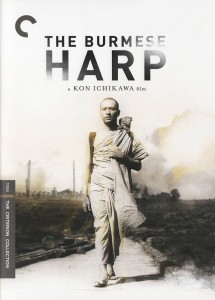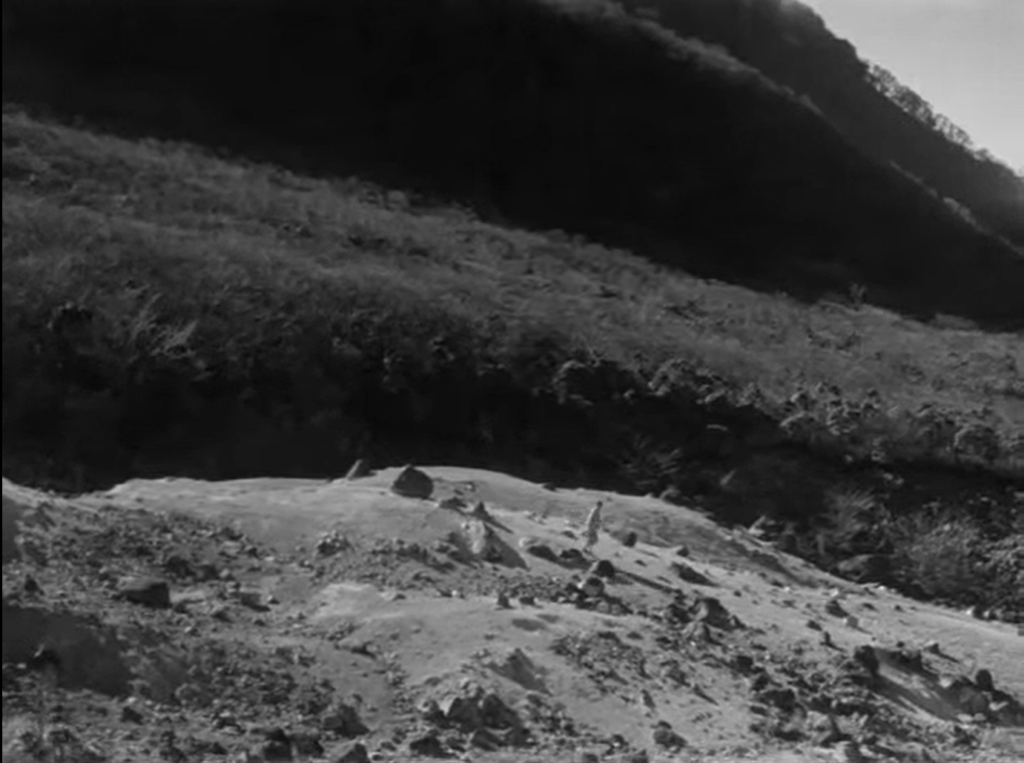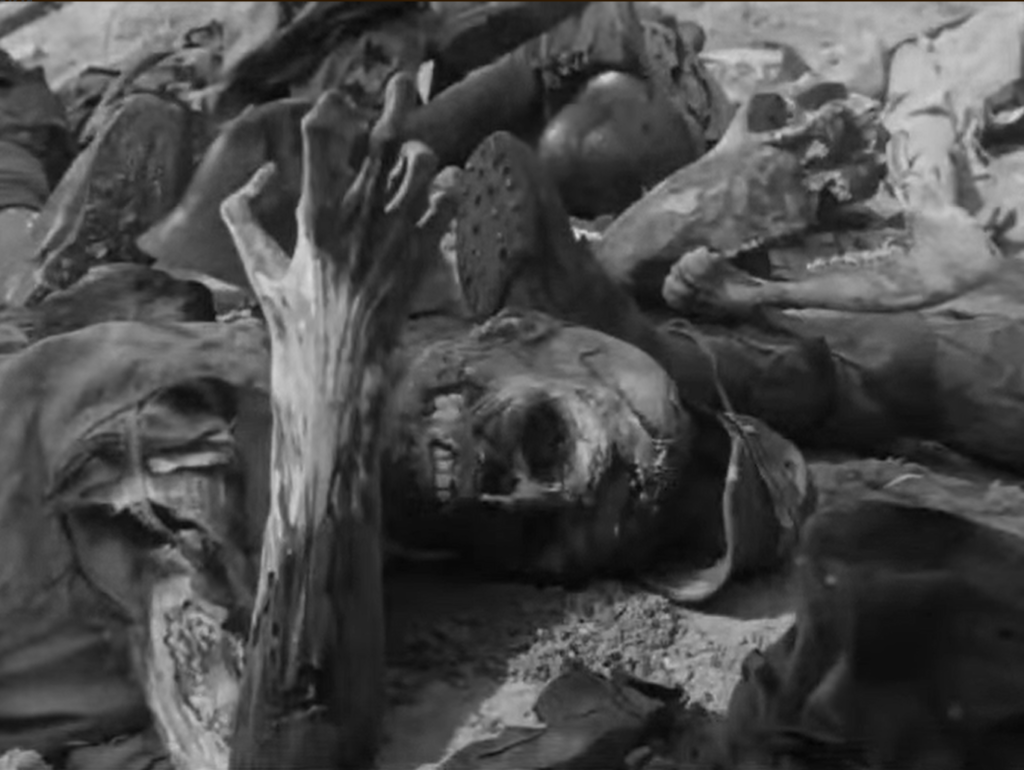|

Synopsis:
At the end of World War II, a Japanese soldier (Shoji Yasui) in Burma is sent to inform another unit that Japan has surrendered; however, the unit refuses to stop fighting, and everyone but Yasui is killed. Devastated, Yasui pretends to be a Buddhist monk and wanders the countryside, burying and paying honor to the dead. In the meantime, his platoon leader (Rentaro Mikuni) conducts an intensive search for the missing soldier.
|
|
Genres, Themes, Actors, and Directors:
- Character Studies
- Japanese Films
- Kon Ichikawa Films
- Mistaken or Hidden Identities
- Search
- Soldiers
- World War II
Review:
Harp of Burma (also known as The Burmese Harp) was Japanese director Kon Ichikawa’s first successful film in America, and remains one of his most accessible movies to date. After a somewhat hokey beginning — in which we are introduced to a Japanese platoon in the final stages of WWII which sings to keep its spirits up — the story quickly becomes more interesting, as Yasui is plunged into an existential crisis and begins his spiritual journey. At this point, Harp of Burma turns into a character study, with Yasui symbolizing veterans everywhere who must find a way to cope with the impossible reality of random death all around them. Rather than retreating into anger, denial, or masochistic behavior, Yasui chooses a path of healing and reflection; in the meantime, his loyal platoon leader (Mikuni) is obsessed with finding the missing soldier, who has become nearly a mythical figure to his fellow soldiers. Ichikawa thus shows us two divergent, yet equally relevant, approaches to dealing with the chaos and loss of war: Yasui honors the dead (who deserve attention and respect), while Mikuni focuses on preserving the living — who will ultimately be responsible for creating a new, post-war Japan.
Redeeming Qualities and Moments:
- Yasui as the harp-playing soldier struggling to make sense of the devastation around him

- Beautiful cinematography of the war-torn Burmese landscape


- A powerful and unique depiction of post-war trauma leading to spiritual awakening
Must See?
Yes. Along with Ichikawa’s Fires on the Plain (1959), this remains one of the best cinematic reflections on post-war devastation.
Categories
- Foreign Gem
- Important Director
(Listed in 1001 Movies You Must See Before You Die)
Links:
|




One thought on “Harp of Burma (1956)”
Essential viewing. An extraordinary film on all counts: directing, writing, acting, design, photography, editing, music. Stunning, really, and realized so perfectly that there’s little to add.
[Note: A year earlier, director Ichikawa gave newcomer Shoji Yasui his first role, in the marvelous film adaptation of Soseki Natsume’s novel ‘Kokoro’ (‘The Heart’). That film shows up in retrospectives here; sadly, it’s otherwise unavailable. As for the dependable – and still hard-working – Rentaro Mikuni, he’s also good in ‘Kwaidan’ (1964) and Juzo Itami’s ‘A Taxing Woman’s Return’ (1988), among others.]